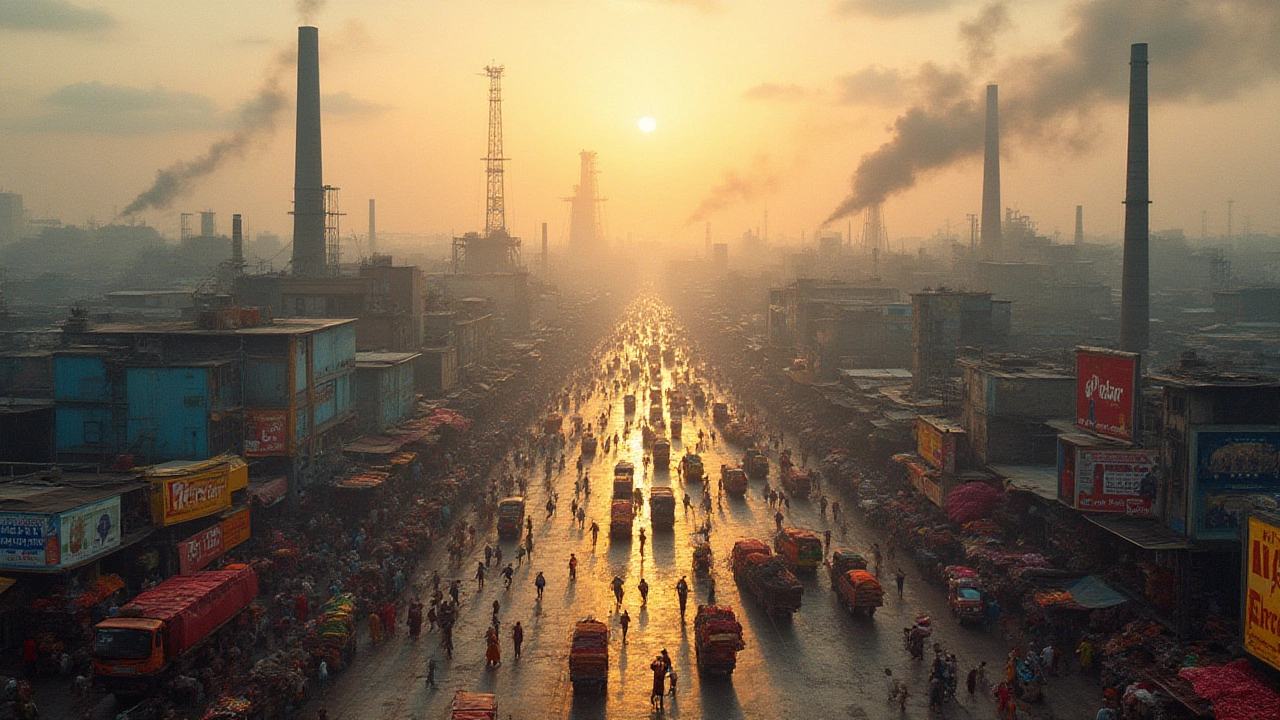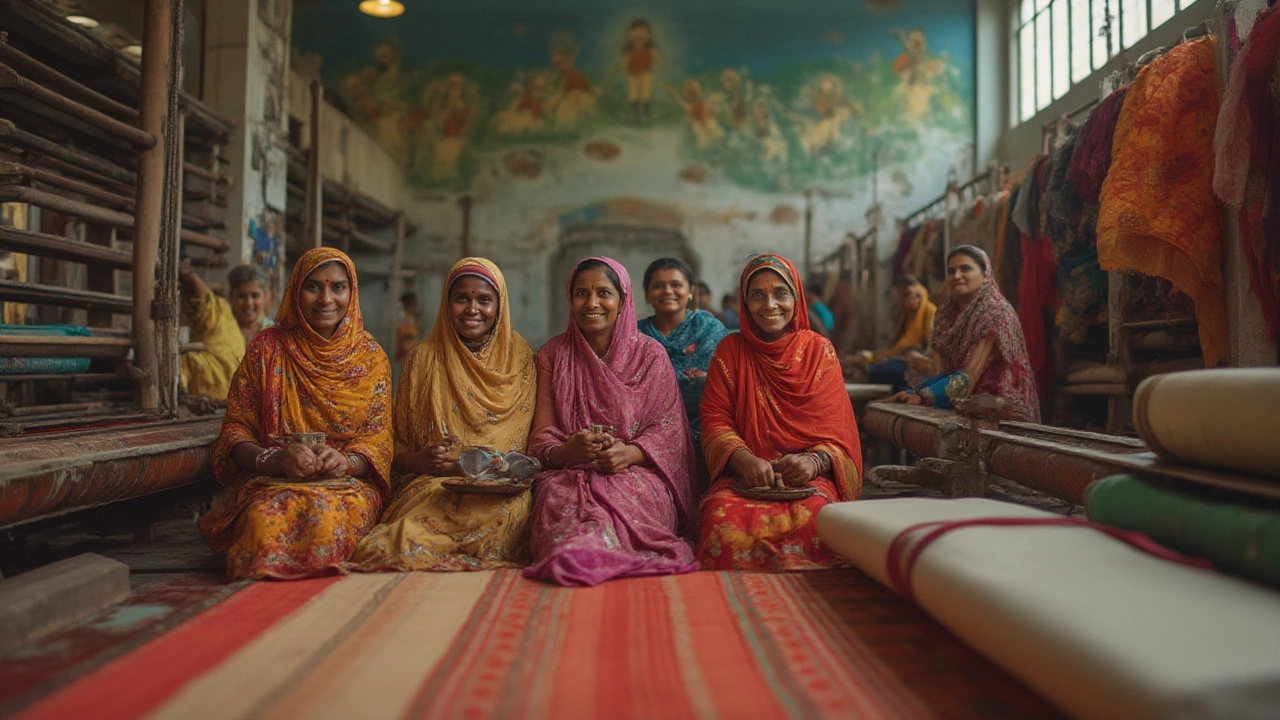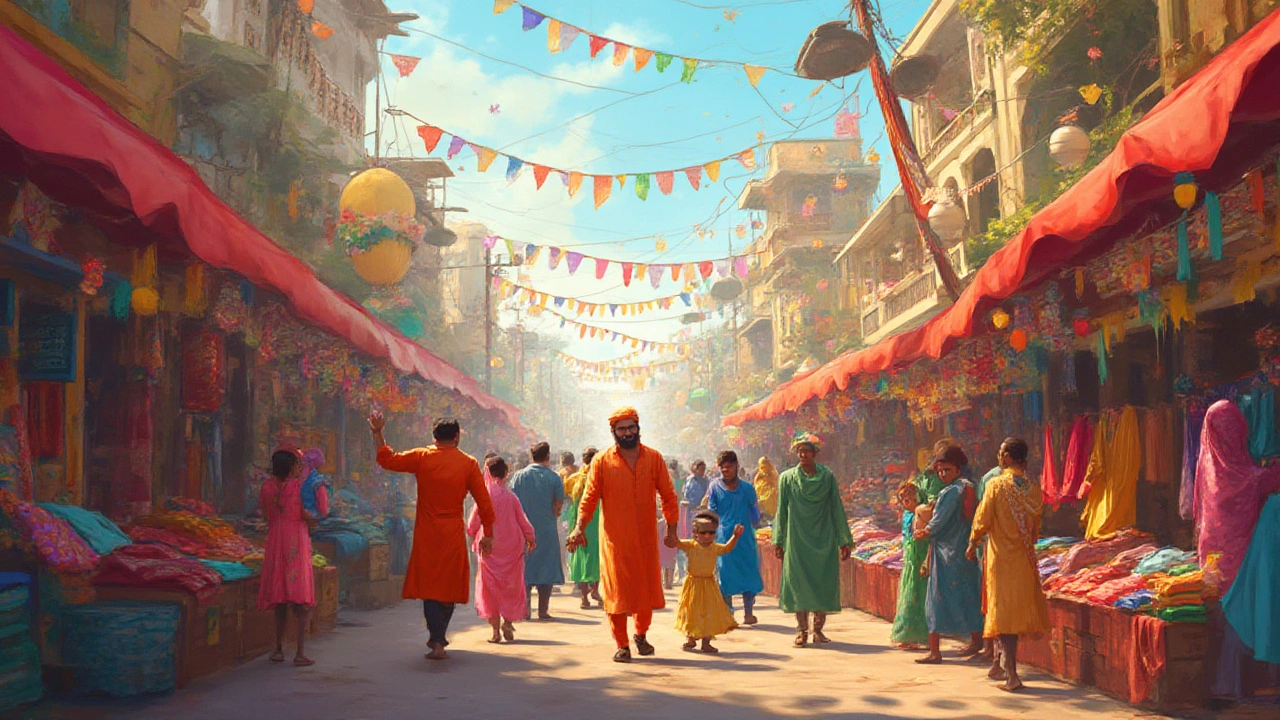Which City is the Textile Hub of India? Unveiling the No 1 Textile City

Ever visited a city where fabric shops outnumber tea stalls and vibrant saris hang in every street? That’s not just a myth—it’s daily life in India’s no.1 textile city. People often throw around names like Mumbai and Coimbatore, but when you look at raw production, diversity, market presence, and sheer energy, one city stands out by miles: Surat. If you wear a saree, drape a dupatta, or slip into a polyester shirt, there’s a good chance it came from here. Surat doesn’t just make textiles; it lives and breathes them.
How Surat Became India’s Textile Powerhouse
Surat’s textile journey starts way back, centuries before fast fashion was even a thing. The city, sitting pretty beside the Tapi river, first found fame as a trading port during the Mughal period. Merchants brought in silks and cottons, and Surat became the halfway house for fabric heading out to Persia, Arabia, and beyond. The British era only turbocharged this, as demand for Indian fabrics exploded in Europe. But after independence, Surat’s real boom began. Textile pioneers started using modern looms, and soon the city went from hand-woven trads to shiny synthetic wonders.
Today, Surat spins, dyes, weaves, finishes, embroiders, and prints more fabric than you can wrap your head around. Here’s a simple stat to chew on: according to the Surat Textile Market Association, 40% of India’s man-made fabric comes from Surat. That’s nearly half the country’s supply, all packed into one buzzing Gujarat city. On busy days, the clatter of over 650,000 power looms makes conversation almost impossible unless you talk in the universal language of gestures.
If you’re ever hunting for a bargain, Surat’s textile markets are legendary. Take the Ring Road, for instance. It’s not just a street, it’s miles of shops groaning with saris, dress material, and sequined wonders. By 10am, you’ll see dealers from Kolkata to Kerala haggling fiercely—one eye on quality, one on the bottom line. Local families run their shops like action-packed dramas, and the buzz feels closer to a movie set than a shopping district.
The numbers speak for themselves, and they’re wild. Here’s a quick snapshot of Surat’s textile muscle:
| Parameter | Surat Figures |
|---|---|
| Power Looms | 650,000+ |
| Daily Fabric Production | 30 million meters |
| Direct Employment | 1.5 million people |
| Annual Turnover | ₹50,000+ crore |
| Share in India’s Man-made Fabric Output | ~40% |
What’s wild is that Surat doesn’t just make fabric—it covers the whole chain. Dyeing units, printing workshops, embroidery experts, and massive wholesale showrooms all work in crazy sync. A saree can go from raw yarn to a finished, packed product in just a couple of days. The city never pauses: trucks unload at midnight, steam presses start at dawn, and order books flip constantly. It’s no exaggeration—the city runs on textile adrenaline.
Now, no industry’s perfect. Surat’s love affair with synthetics and dyes hasn’t been great for the environment. Water bodies face a real threat, and chemical waste is a headache. But things are changing. Cleaner dyeing techniques, zero-liquid discharge plants, and bio-enzymes are making a difference. Sustainability is becoming the new buzzword, especially as buyers from Europe and the US set tougher standards.

The Culture, Community, and Chaos Behind Surat’s Textile Boom
What makes Surat’s story so downright epic isn’t just numbers or cloth rolls—it’s the people and wild setup they operate in. Walk around Surat’s textile zone and you’ll meet everyone from Marwari businessmen with generations in silks, to Sindhi embroidery artists who believe their hands have magic. It’s a melting pot: north Indian wholesale traders, south Indian buyers, Gujarati artisans, all jammed together chasing the next big deal.
The city’s vibe changes with the seasons. Come Diwali, the city is feverish with pre-festival demand—stalls stacked with the kind of shimmery sarees you see at family weddings. And in wedding season, it feels like half of India’s clothing budget passes through these lanes. Surat isn’t shy about spectacle: during Navratri, fabric floats in every color you can imagine, and merchants compete for the flashiest displays. If you’ve ever handled a glitter-laden lehenga and wondered who thinks up these wild combos—look no further than Surat’s designers.
One interesting twist: Surat is also the launchpad for trends that sweep through small-town India. Fancy digital prints that look like paintings? Started here. Featherweight georgette saris? Also Surat. There’s a reason Bollywood stylists and high street fashion scouts quietly visit before releasing new collections. At street level, what’s even more fun is how the city’s thousands of small and medium units operate with wild flexibility. Factories can flip production lines in a week—one day it’s ethnic, next day Western dresses for the Dubai market. That’s grit you won’t find anywhere else.
It’s easy to forget, but the ups and downs of Surat are personal for millions. Many workers travel hundreds of kilometers for a steady gig. There are micro-communities within the mills—some even have their own shared kitchens and cricket teams. And when there’s a festival, factory owners often host mega-lunches for entire teams. It’s messy, chaotic, sometimes noisy—but at the heart is a kind of loyalty to “the trade.”
Surat’s textile story also comes with its share of hurdles. Competition from China keeps everyone on their toes. Rising power costs, complex GST rules, and now, growing demand for eco-friendly production all add pressure. But Surat’s big strength is its hustle. Take 2020: when the COVID-19 lockdowns brought factories to a standstill, Surat producers pivoted almost overnight to make PPE suits and masks. They kept supply chains running for hospitals and police when others couldn’t.
The Times of India called Surat “the unchallenged king of India’s man-made fabric market, driving fashion pipelines across Asia.”
The city’s mix of raw ambition, creativity, and sheer sweat has built an ecosystem you seldom see. Every festival, every big cricket match, every social change—there’s a textile angle in Surat, and it’s woven deep into the city’s DNA.

Why Surat Wears the Crown: Lessons for India and the World
Surat’s reign as the no.1 textile city of India isn’t an accident. Let’s break down why it stays ahead—and what cities worldwide could learn.
- Speed and Adaptability: Surat’s mills and shops don’t wait for trends—they set them. The jump from hand-loom to power-loom, cotton to synthetics, and offline to online sales happened at blistering speed. There’s barely any red tape within the city’s clusters, and family-run units often make decisions faster than any big corporate.
- Complete Value Chain: Unlike most textile hubs, Surat offers everything in-house. Raw yarn becomes finished, packaged products in days. No middleman, no pointless delays. This end-to-end setup keeps costs low and allows for inventive design changes on the fly.
- Massive Market Reach: Surat doesn’t just clothe India. Its fabric goes to Bangladesh for sewing, makes its way to Dubai’s malls, hits Indonesian bazaars, and even finds a backdoor into Africa. No wonder it’s called “the world’s fabric factory.”
- People Power: The city isn’t just powered by machines—it depends on skilled dyers, weavers, and designers, many passing their craft down generations. Families stick together, pooling experience and resources.
- Digital Shift: With the pandemic, even the old timers got a taste of online selling. Today, WhatsApp orders, Instagram catalogs, and B2B apps like TextileDeals.in are as common as face-to-face haggling. Surat’s digital transformation is helping lock in the next generation.
Want to explore? Book a visit during Diwali or the wedding boom for true color madness. If you’re sourcing fabric, look for smaller units run by long-time locals—deals are often better and quality is surprisingly high. Out-of-towners should prepare to bargain, wear comfy shoes, and never refuse a shopkeeper’s offer of chai—it’s rude, and often the best tips come over tea.
Surat’s journey isn’t just a business case, it’s a survival story. Whenever my dog Max curls up on a pile of cushion covers, half of them tag back to Surat. There’s a reason India and the world keep coming back to this shareef yet spunky city. If you want fabric that’s bold, creative, and woven with generations of passion, look no further—Surat is India’s undisputed textile king.